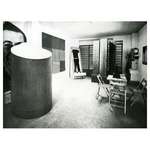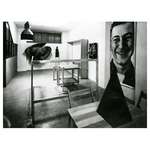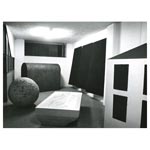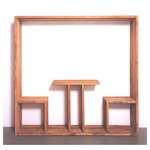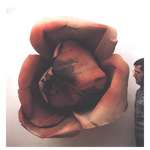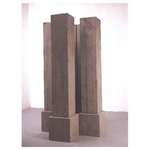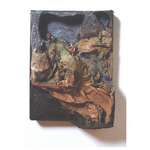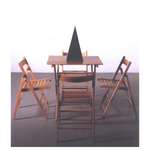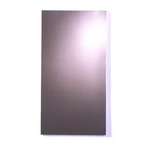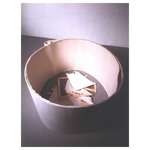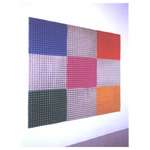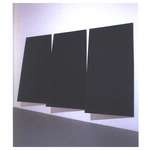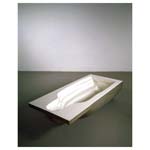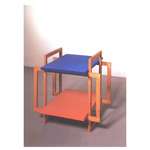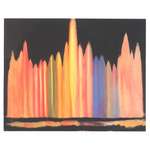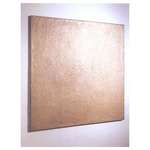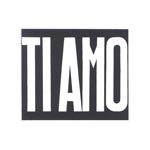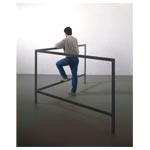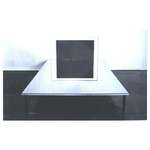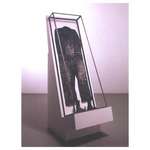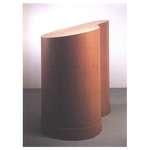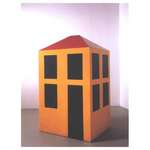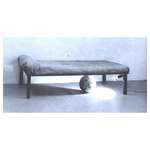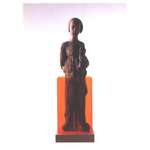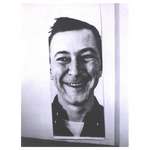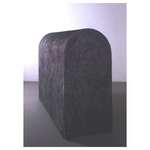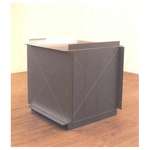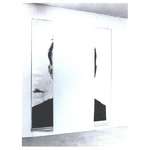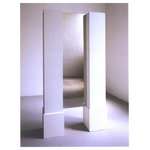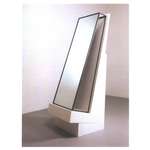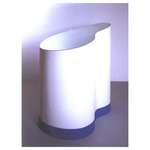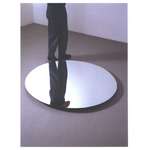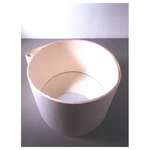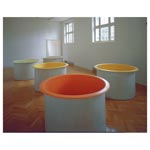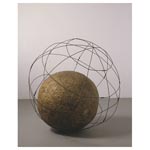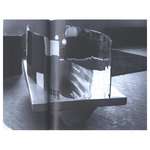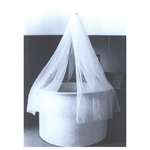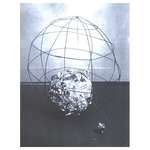Between December 1965 and January 1966 Pistoletto made and showed in his studio, a former printing house where he also lived at the time, a group of works to which he gave the name Minus Objects [Oggetti in meno]. They grew out of a process linked to the temporal dimension of contingency and each one was so different from the next that they created the impression of a group exhibition, breaking with the dogma that all of an artist’s work should be stylistically recognizable, as if it were a standardized trademark. Initially they got a cold reception from the critics and met with a lack of understanding on the part of gallerists. For the critic Germano Celant, who went to see the exhibition and was in close contact with Pistoletto in these years, the Minus Objects were a fundamental step in the birth of Arte Povera, as Celant himself would write in his programmatic manifesto “Arte Povera: Notes for a Guerilla War,” published in the magazine Flash Art in November 1967.
The first presentation of some of the Minus Objects outside the artist’s studio was in the exhibition “Arte Abitabile”, held in June 1966 at the Galleria Sperone in Turin, in which Piero Gilardi and Gianni Piacentino also took part. In December of the same year Pistoletto created several “versions” of the Minus Objects characterized by the presence of reflective elements that would be shown at the Galleria La Bertesca in Genoa. An important text by Pistoletto on the Minus Objects also appeared in the catalogue of this exhibition.
Over the following years Minus Objects would be shown at many solo and group exhibitions. However, it would only be with the display of the entire group of Minus Objects, brought together for the homonymous exhibitions at the Kunsthalle in Bern and the Wiener Secession in 1989-90, accompanied by the publication of a book devoted specifically to them, followed by their presentation at documenta in Kassel in 1997, that the Minus Objects would obtain the recognition they were due.
In the United States the Minus Objects were shown for the first time in 1979 at the Los Angeles County Museum of Art (LACMA), and then in 1988 at the PS1 Museum in New York, in 2010 at the Philadelphia Museum of Art and in 2013 at Luhring Augustine Bushwick in Brooklyn, New York. The reader is referred to the catalogue of this last show for a history of exhibition of the Minus Objects and the transcription of two conversations between Pistoletto, Germano Celant and Carlos Basualdo that took place during the show.
“I feel that in my recent works I have entered the mirror and actively penetrated the dimension of time that was merely represented in the Mirror Paintings. These recent works bear witness to the need to live and act in accordance with this dimension, i.e. in the light of the unrepeatable quality of each instant of time, each place, and thus of each ‘present’ action. [...] My works are not constructions or fabrications of new ideas, any more than they are objects that represent me, intended to be imposed and to impose me on others. Rather, they are objects through whose agency I free myself from something—not constructions, then, but liberations. I do not consider them more but less, not pluses but minuses, in that they bring with them a sense of a perceptual experience that has been definitively manifested once and for all.”
(M. Pistoletto, Oggetti in meno, Galleria La Bertesca, Genoa 1966).
“At the end of 1964 Leo Castelli told me, hurry up and make some more paintings because the others have all been sold or placed with museums and I want to give you a show right away. So I went to work like a madman. I set off for New York and I remember that when I arrived there, I had Solomon, who had curated the American pavilion at the 1964 Venice Biennale, when Rauschenberg had won, on one side in the taxi and Leo Castelli on the other. Castelli said: ‘Listen, you have to come to the United States or there’s nothing more I can do for you. You’re doing very well, but either you join our family or it won’t be possible to go on.’ [...] This is just to say how I returned to Italy to make the Minus Objects and how I reacted to an idea of the market that empowered a cultural and practical control which forced you to feel you were either part of a clan or alone. I chose to be alone because I was convinced that what I had developed was a work springing out of a cultural soil that had not been disinherited, but could draw on a profound heritage.”
(M. Pistoletto, interview with Germano Celant, 31)
